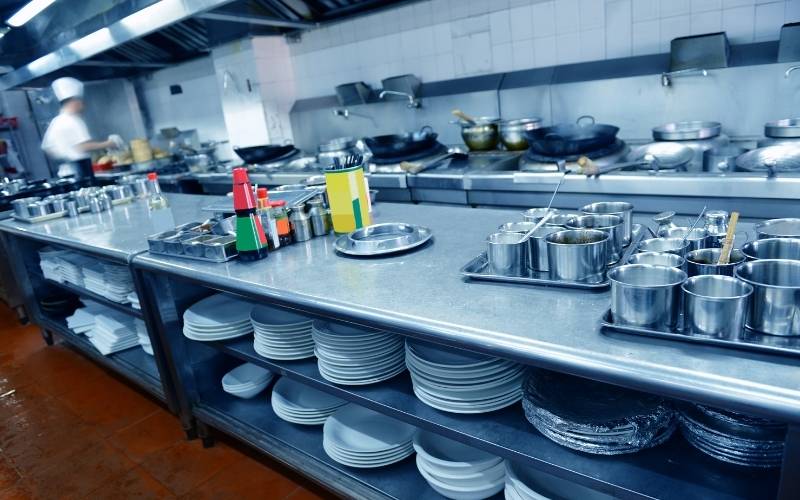As a restaurateur, you know that managing your kitchen inventory is critical to your success. If you are not careful, you can quickly run out of stock and find yourself unable to serve your customers.
That’s why it is essential to be strategic about managing your inventory. Here are some tips from restaurant food supplier to manage your inventory.
What is Food Inventory Management?
Food inventory management is a way to track what and how much inventory your restaurant carries. With this information, restaurants can optimize their purchases, minimize inventory lost due to theft, spoilage, or waste, and maximize profits. Restaurants with a firm grasp of inventory management know the following at any given time:
- What inventory have you purchased, and for how much?
- The amount of inventory used each day.
- The inventory remaining at the end of each day
Why Effective Inventory Management is Important for Restaurants
Restaurant kitchen inventory is one of the essential aspects of restaurant management. If you cannot manage inventory effectively, you will not have the ingredients you need to cook your dishes, which will impact your bottom line. You will also be unable to track your food costs, which can impact your profits. That’s why it is essential to have a system for managing your inventory.
Tips From a Restaurant Food Supplier on Effective Inventory Management
When managing your restaurant kitchen inventory, it is essential to take a systematic and organized approach.
Here are some tips from suppliers on how to do just that:
1. Keep Things Organized
One of the most important aspects of better inventory management is organization. Everything should have a specific place. Knowing where products are and getting to them early increases sales and keep employees focused. Consider labelling your shelves or creating a spreadsheet to track what’s on them. To make it easier to find what you need quickly, divide your inventory into sections (dry goods, freezers, refrigerators, paper goods, office supplies, uniforms, etc.)
2. Follow FIFO (First in, First Out) Method for Food Storage
FIFO is a food storage rotation technique. It means Using the ingredients received first to prevent them from spoilage. This simple action can drastically reduce food waste. If you remove food from its original packaging into another container, remember to label the food with an expiration date. Chefs will be able to identify which ingredient they can use first.
3. Monitor Your Stock
Keep track of daily use ingredients which may help you to be aware of the goods accessible at your location. And you can generate a monthly inventory report. Keep a detailed inventory of all the ingredients and supplies you have in your kitchen. It will allow you to keep track of everything you have and all you need.
- Keep track of your daily consumption
- Keep an eye on the sell-through rate
- Make purchases only when required
- Examine each stock item’s yield
4. Avoid Food Wastage
Food waste is bad for the world food supply and minimizes the restaurant’s profit ratio. When you produce too much food waste, raw materials you could have put into better use elsewhere are thrown out. Food waste management in restaurants is a few things to keep in mind.
- Perform a waste audit
- Recycle or donate
5. Analyzing Reports and Data
Analyzing and examining the old and new data and reports helps you in decision-making while selecting items and ingredients. It may guide you on what you need more or what you need to remove from your kitchen or menu.
6. Make a List and Plan
Please list the items you use most often and always have them stocked. It will help reduce your time running out of the grocery store to restock your ingredients. Plan out your menu in advance and make sure to order the ingredients you need well in advance. It will prevent you from running out of key ingredients at the last minute.
7. Train the Staff
Train your staff on how to handle and store inventory properly. It will help minimize wastage and keep your kitchen running smoothly. Keep the same employees in charge to prevent any confusion or overriding of inventory stock. Making a hierarchy and division in staff will avoid miscommunication and errors when reordering or clearing any spoiled item.
Conclusion
A well-organized kitchen is a massive contributor to the success of your restaurant. It’s like a well-oiled machine. If done systematically, kitchen management makes it pleasant and easy for everyone working in your restaurant. According to restaurant food suppliers, if you keep your restaurant inventory manually, you must regularly track inventory levels and manually place orders when out of stock. Your goal should be to create a restaurant inventory management system to optimize your resources and reduce costs while dominating the competition.
Read: How to Reduce Food Waste in Restaurants – Tips from Foodservice Distributor






